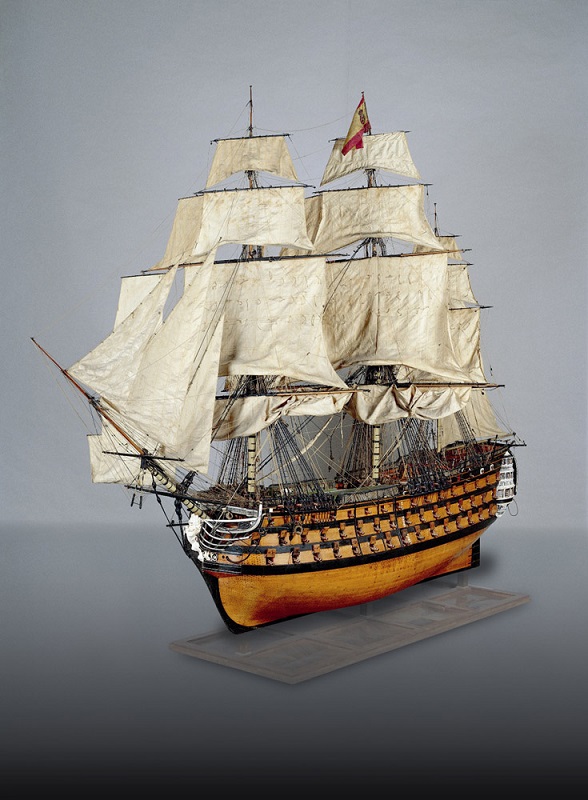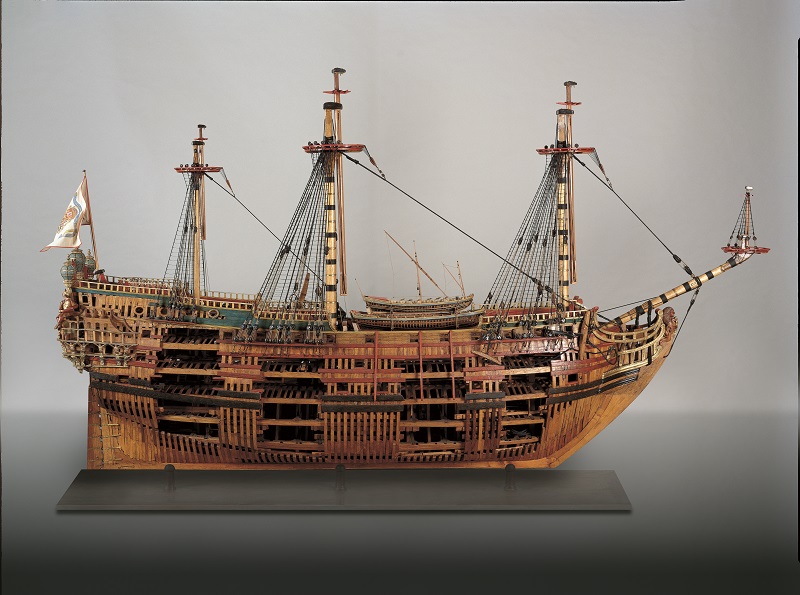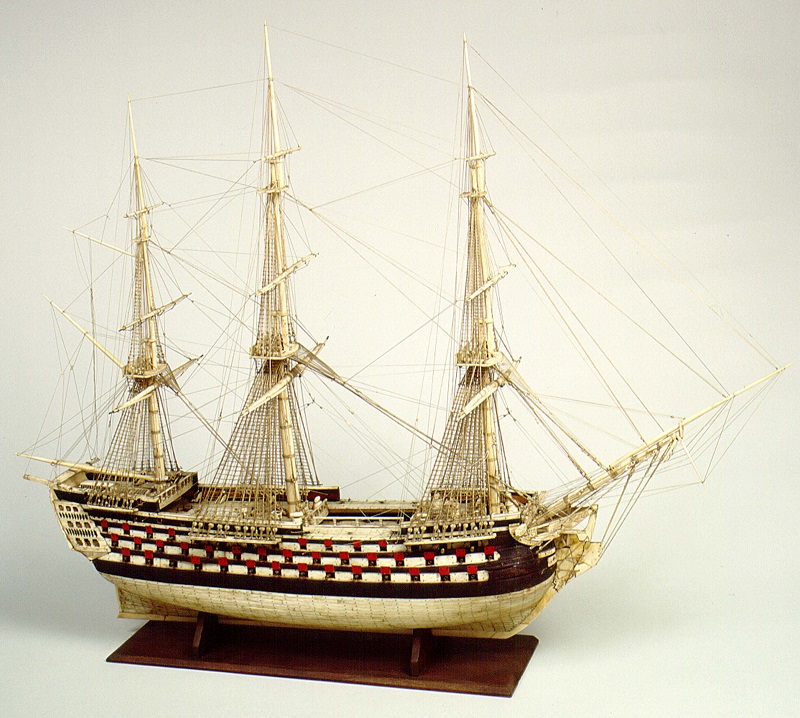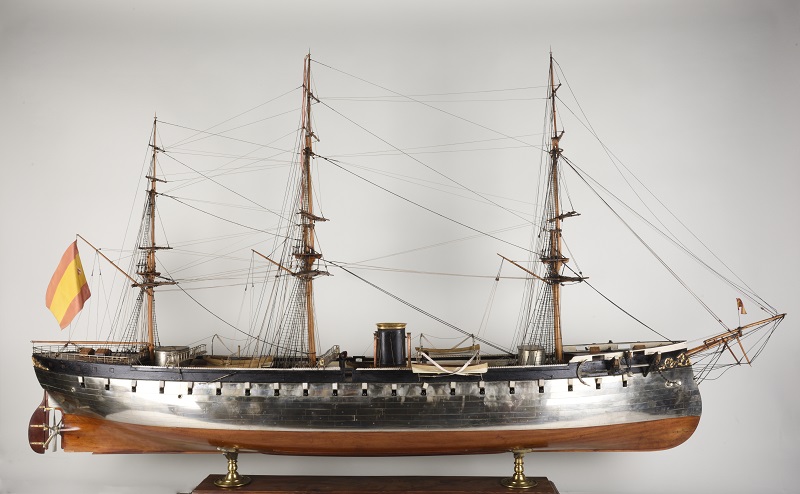Military Shipbuilding
The military navy shipbuilding collection is one of the most representative collections of the Naval Museum. It is made up of shipyard models, models of machines and engines, tools, marine equipment and, above all, models of ships in the service of the Navy from the 16th century to the present day. A large part of this collection is due to the Royal Order promulgated in 1853, which established the obligation to send a model of every ship built for the Navy to the Naval Museum.
Shipyard modelsAmong its more than 600 holdings are the shipyard or construction models. These models were made at the same time as the plans, and accurately reproduce on a reduced scale the construction details of actual ships so that the Board of Builders could evaluate them. Through these models we can learn about the evolution of shipbuilding systems in Spain throughout the 18th century—Gaztañeta, Jorge Juan, Gautier, Romero y Landa and Martín de Retamosa—and also find out what famous ships such as the "Real Carlos", dedicated to Charles III, or the "Real Borbón", commissioned by Ferdinand VII, were like.
In the 19th century, the shipyard models disappeared and were replaced by the shipbuilders' models, in which the hulls began to be made of solid wood instead of frames, and later on, of metal, cardboard or plastic. The model of the original project for the armoured frigate "Numancia" falls into this typology.
Instructional modelsAmong the historical models, the instructional or teaching models also stand out, used to teach future sailors the nomenclature of the different parts of the ship, the distribution of space to make the best use of it or the handling of the manoeuvre. A highlight is the half model of a 68-gun ship, built in 1782 to instruct the students of the Academy of Navy Pilots of the Department of Cartagena.
Historical reconstructionsOne of the most extensive sections of this collection are the historical reconstructions, recreations of old ships based on previous research on construction treatises, written descriptions, plans, engravings, paintings or remains from underwater archaeology. The Naval Museum exhibits a magnificent historical reconstruction Model of the galleon "Nuestra Señora de la Concepción y de las Ánimas" (1687-1705), based on a manuscript from 1688 that describes in detail the construction of this galleon. Its more than 20,000 items make it possible today to appreciate the external appearance of a 17th century galleon, as well as to examine its structural elements and interior installations.
Prisoner modelsPrisoner models are so called because they were made by French officers and sailors imprisoned in English prisons and pontoons during the Napoleonic Wars. These models were made from the meagre materials available to the prisoners: wood, bones, hair, horsehair or threads from scraps of clothing.
Economic needs and long periods of imprisonment were the seed of this type of models, which reached a high degree of perfection. These models were so popular with collectors that some of them fetched very high prices, which meant that their makers, once released, continued to make them, although with the introduction of more noble materials such as ivory.










